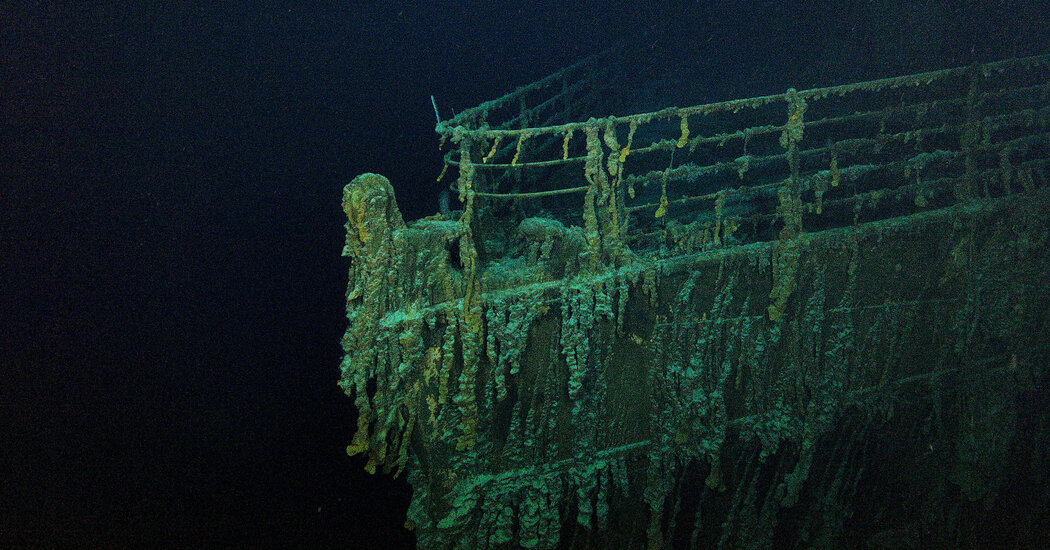New footage of the Titanic wreckage released last week by a commercial exploration company show the doomed ship in vivid detail and highlighted that the world for wealthy tourists not only extends to space, but also the deep sea.
The one-minute clip was shared by OceanGate Expeditions, a company that takes paying tourists in submersibles to shipwrecks and underwater canyons. For the Titanic expedition this summer, guests paid $250,000 to take a submersible down about 2.4 miles to where the wreckage rests on the seabed.
Since the hulking ship was found upright and split in two sections in 1985, less than 400 miles off Newfoundland, it has captivated historians, archaeologists and others. Stockton Rush, the president of OceanGate, said private exploration was needed to continue feeding this fascination.
“No public entity is going to fund going back to the Titanic,” Mr. Rush said. “There are other sites that are newer and probably of greater scientific value.”
OceanGate has now led two expeditions to the site and has one planned for 2023. The dives last about eight hours, including the estimated 2.5 hours each way it takes to descend and ascend.
Scientists and historians provide context on the trip and some conduct research at the site, which has become a reef that is home to many organisms. The team also documents the wreckage with high-definition cameras to monitor its decay and capture it in detail.
But the high-quality footage of the ship’s bow, anchor and an anchor chain does not impress everyone.
Paul F. Johnston, curator of maritime history at the Smithsonian’s National Museum of American History, was not awed by the footage and said that the OceanGate trips were “people paying a lot to be ballast.”
“I don’t object to this kind of commercial exploitation because they’re not touching or damaging the wreck,” Mr. Johnston said. “And it brings attention to the underwater world and to shipwrecks in general, but in my opinion, there’s not that much to be learned from Titanic that we don’t already know.”
There has been a debate for decades about who should visit the wreckage and why.
More than 1,500 of the Titanic’s passengers died, raising ethical questions about disturbing a site that may also function as a graveyard. About 700 people survived.
Many historians and scientists have also opposed efforts to pull artifacts from the site onto land. Mr. Johnston was one of several scientists to write to a court in support of the United…
Click Here to Read the Full Original Article at NYT > Travel…
